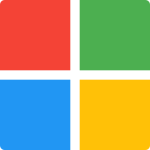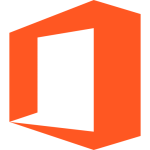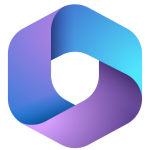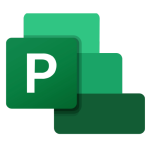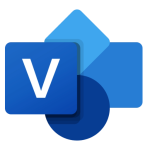QuickBooks Desktop: Your Ultimate Tool for Advanced Accounting Tasks
QuickBooks Desktop is a powerful accounting software that helps businesses manage their finances efficiently. While it’s user-friendly, some tasks require a deeper understanding of its features. In this guide, we’ll walk you through 18 advanced tasks in QuickBooks Desktop, including accepting credit card payments, adjusting inventory, creating budgets, e-filing tax forms, and more. Whether you’re a business owner, accountant, or bookkeeper, this guide will help you master QuickBooks Desktop.
1. How to Accept Credit Card Payments in QuickBooks Desktop
Accepting credit card payments in QuickBooks Desktop can streamline your cash flow. Here’s how to set it up:
Steps to Accept Credit Card Payments:
- Enable Credit Card Payments:
- Go to Edit > Preferences > Payments and enable credit card payments.
- Set Up a Merchant Account:
- Sign up for a QuickBooks merchant account or connect an existing one.
- Create an Invoice:
- Go to Customers > Create Invoices and add the credit card payment option.
- Process Payments:
- Once the customer pays, record the payment in QuickBooks Desktop.
Pro Tip:
- Use the Payments tab to track and reconcile credit card transactions.
2. How to Adjust Inventory in QuickBooks Desktop
Adjusting inventory in QuickBooks Desktop ensures your records match your physical stock. Here’s how:
Steps to Adjust Inventory:
- Go to Lists > Item List.
- Select the item you want to adjust and click Adjust Quantity/Value on Hand.
- Enter the new quantity or value.
- Save the adjustment.
Important Notes:
- Use the Memo field to note the reason for the adjustment.
- Regularly review your inventory in QuickBooks Desktop to avoid discrepancies.
3. How to Adjust Payroll Liabilities in QuickBooks Desktop
If you need to correct payroll liabilities in QuickBooks Desktop, follow these steps:
Steps to Adjust Payroll Liabilities:
- Go to Employees > Payroll Taxes and Liabilities > Adjust Payroll Liabilities.
- Select the employee and payroll item.
- Enter the adjustment amount and date.
- Save the adjustment.
Pro Tip:
- Double-check your payroll reports in QuickBooks Desktop after making adjustments.
4. How to Change Password in QuickBooks Desktop
Changing your password in QuickBooks Desktop regularly enhances security. Here’s how:
Steps to Change Password:
- Go to Company > Set Up Users and Passwords > Change Your Password.
- Enter your current password and the new password.
- Save the changes.
Important Notes:
- Use a strong password with a mix of letters, numbers, and symbols.
- Update your password in QuickBooks Desktop every 90 days for added security.
5. How to Convert QuickBooks Online to Desktop
If you’re switching from QuickBooks Online to QuickBooks Desktop, here’s how to convert your data:
Steps to Convert Data:
- Export Data from QuickBooks Online:
- Go to Settings > Export Data and download your data.
- Import Data into QuickBooks Desktop:
- Open QuickBooks Desktop and go to File > Utilities > Import.
- Follow the prompts to upload your data.
Pro Tip:
- Back up your QuickBooks Online data before starting the conversion.
6. How to Create a Budget in QuickBooks Desktop
Creating a budget in QuickBooks Desktop helps you plan and track your finances. Here’s how:
Steps to Create a Budget:
- Go to Company > Planning & Budgeting > Set Up Budgets.
- Select the fiscal year and budget type.
- Enter your budget amounts for each account.
- Save the budget.
Pro Tip:
- Use the Copy Across feature in QuickBooks Desktop to apply the same amount to multiple months.
7. How to Create an Accountant’s Copy in QuickBooks Desktop
An accountant’s copy in QuickBooks Desktop allows your accountant to work on your file while you continue using the software. Here’s how to create one:
Steps to Create an Accountant’s Copy:
- Go to File > Send Company File > Accountant’s Copy.
- Select Client Activities and choose Create Accountant’s Copy.
- Save the file and send it to your accountant.
Important Notes:
- You can only have one accountant’s copy at a time in QuickBooks Desktop.
- Use the Dividing Date feature to specify which transactions your accountant can edit.
8. How to Create W-2s in QuickBooks Desktop
Creating W-2 forms for your employees in QuickBooks Desktop is easy. Here’s how:
Steps to Create W-2s:
- Go to Employees > Process Payroll Forms.
- Select Form W-2/W-3 and choose the year.
- Review the information and make corrections if needed.
- Click Print W-2s or E-file to submit electronically.
Pro Tip:
- Use pre-printed W-2 forms for professional results.
9. How to E-file 1099s in QuickBooks Desktop
E-filing 1099s in QuickBooks Desktop saves time and ensures compliance. Here’s how:
Steps to E-file 1099s:
- Go to Vendors > Print/E-file 1099s.
- Review the vendor information and make corrections if needed.
- Click E-file to submit electronically.
Important Notes:
- Ensure your vendor information is accurate before e-filing in QuickBooks Desktop.
- Use the 1099 Wizard to simplify the process.
10. How to E-file W-2s in QuickBooks Desktop
E-filing W-2s in QuickBooks Desktop is quick and efficient. Here’s how:
Steps to E-file W-2s:
- Go to Employees > Process Payroll Forms.
- Select Form W-2/W-3 and choose the year.
- Review the information and make corrections if needed.
- Click E-file to submit electronically.
Pro Tip:
- Use the Payroll Tax Table Update feature in QuickBooks Desktop to ensure compliance with the latest tax laws.
11. How to Enter Credit Card Charges in QuickBooks Desktop
Recording credit card charges accurately in QuickBooks Desktop is crucial for maintaining your financial records. Here’s how:
Steps to Enter Credit Card Charges:
- Go to Banking > Enter Credit Card Charges.
- Select the credit card account and enter the transaction details.
- Save the transaction.
Pro Tip:
- Use the Memorize Transaction feature in QuickBooks Desktop for recurring charges.
12. How to Find the 941 Report in QuickBooks Desktop
The 941 report in QuickBooks Desktop is used to file quarterly payroll taxes. Here’s how to find it:
Steps to Find the 941 Report:
- Go to Reports > Employees & Payroll.
- Select Payroll Liability Balances or Payroll Summary.
- Customize the report to include 941 information.
Important Notes:
- Ensure your payroll data is up-to-date in QuickBooks Desktop before generating the report.
13. How to Import Credit Card Transactions into QuickBooks Desktop
Importing credit card transactions into QuickBooks Desktop saves time and reduces manual data entry. Here’s how:
Steps to Import Credit Card Transactions:
- Go to Banking > Bank Feeds > Bank Feeds Center.
- Select your credit card account and click Download Transactions.
- Review and match the transactions.
- Add or exclude transactions as needed.
- Click Add to QuickBooks to finalize.
Pro Tip:
- Use the Rules feature in QuickBooks Desktop to automate transaction categorization.
14. How to Import Transactions into QuickBooks Desktop
Importing transactions from Excel or CSV files into QuickBooks Desktop can save time. Here’s how:
Steps to Import Transactions:
- Go to File > Utilities > Import > From Excel or CSV.
- Select the file and map the fields to QuickBooks Desktop.
- Review the transactions and click Import.
Important Notes:
- Ensure your file is formatted correctly before importing into QuickBooks Desktop.
15. How to Install QuickBooks Desktop
Installing QuickBooks Desktop is straightforward. Here’s how:
Steps to Install QuickBooks Desktop:
- Download the installation file from the QuickBooks website.
- Run the installer and follow the on-screen instructions.
- Activate the software using your license key.
Pro Tip:
- Ensure your system meets the minimum requirements before installing QuickBooks Desktop.
16. How to Make QuickBooks Online Look Like Desktop
If you prefer the QuickBooks Desktop interface, you can customize QuickBooks Online to look similar. Here’s how:
Steps to Customize QuickBooks Online:
- Use the View menu to switch to Classic View.
- Customize the dashboard to display your most-used features.
- Use keyboard shortcuts to navigate quickly.
Pro Tip:
- Explore the Settings menu in QuickBooks Online to personalize your experience.
17. How to Migrate QuickBooks Desktop to QuickBooks Online
Migrating from QuickBooks Desktop to QuickBooks Online? Here’s how:
Steps to Migrate Data:
- Export Data from QuickBooks Desktop:
- Go to File > Export and select Export to QuickBooks Online.
- Sign in to QuickBooks Online:
- Log in to your QuickBooks Online account or create a new one.
- Import Data:
- Follow the prompts to upload your QuickBooks Desktop file.
- Review and confirm the data transfer.
Important Notes:
- Not all features from QuickBooks Desktop are available in QuickBooks Online.
- Back up your QuickBooks Desktop file before starting the transfer.
18. How to Print Chart of Accounts in QuickBooks Desktop
Printing your chart of accounts in QuickBooks Desktop can help you review your financial structure. Here’s how:
Steps to Print Chart of Accounts:
- Go to Lists > Chart of Accounts.
- Click Print and select Print List.
- Choose your printer and click Print.
Pro Tip:
- Use the Export feature in QuickBooks Desktop to save the chart of accounts as a PDF.
Why Mastering These Tasks in QuickBooks Desktop Matters
Understanding how to perform these advanced tasks in QuickBooks Desktop can save you time, reduce errors, and improve your overall financial management. Whether you’re a small business owner, accountant, or bookkeeper, these skills are invaluable for maintaining accurate and efficient records.
FAQs
1. Can I accept credit card payments in QuickBooks Desktop without a merchant account?
No, you’ll need a merchant account to process credit card payments in QuickBooks Desktop.
2. How often should I adjust my inventory in QuickBooks Desktop?
Adjust your inventory regularly, especially after physical counts or significant changes.
3. Can I e-file 1099s and W-2s at the same time in QuickBooks Desktop?
Yes, you can e-file both forms separately in QuickBooks Desktop.
4. How do I update my payroll subscription in QuickBooks Desktop?
Go to Employees > Get Payroll Updates to download the latest payroll updates.
5. Can I import transactions from Excel into QuickBooks Desktop?
Yes, you can use the Import Excel Files feature under File > Utilities.
Conclusion
QuickBooks Desktop is a powerful tool that can simplify your accounting processes when used correctly. By mastering these advanced tasks—accepting credit card payments, adjusting inventory, creating budgets, e-filing tax forms, and more—you’ll be well-equipped to manage your business finances effectively.
If you found this guide helpful, share it with others who might benefit! And if you have any questions or need further assistance, feel free to leave a comment below.
